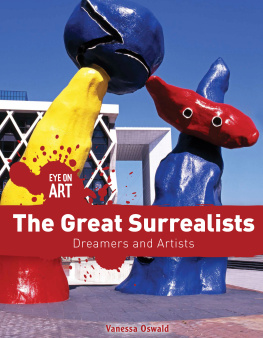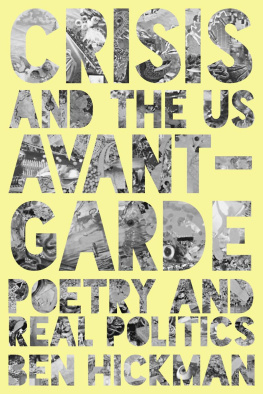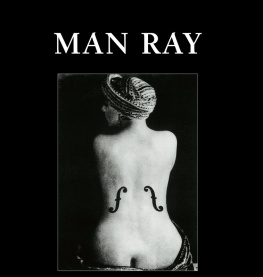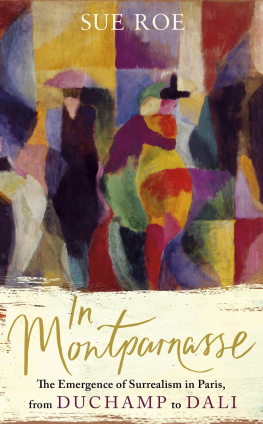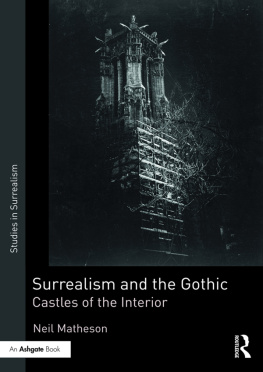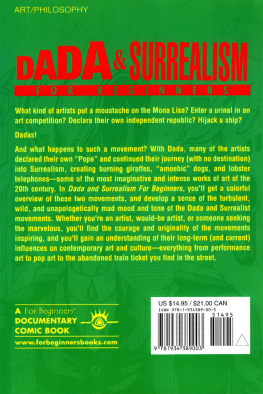The Milk Bowl of Feathers
Copyright 2018 by Mary Ann Caws
Copyright 2018 by New Directions Publishing Corp.
All rights reserved. Except for brief passages quoted in a newspaper, magazine, radio, television, or website review, no part of this book may be reproduced in any form or by any means, electronic or mechanical, including photocopying and recording, or by any information storage and retrieval system, without permission in writing from the Publisher.
Credits and permissions for the individual poems are listed on page 90.
New Directions wishes to thank John Barrington for his great help with this project.
Manufactured in the United States of America
New Directions books are printed on acid-free paper
First published as New Directions Paperbook 1422 in 2018
Design by Marian Bantjes
Library of Congress Cataloging-in-Publication Data
Names: Caws, Mary Ann, editor, writer of introduction.
Title: The milk bowl of feathers : essential surrealist writings / edited, with an introduction, by Mary Ann Caws.
Other titles: Surrealist writings
Description: First edition. | New York : New Directions Publishing, 2018. | A New Directions Book. | First published as New Directions Paperbook in 2018 Verso title page.
Identifiers: lccn 2018021502 (print) | lccn 2018025131 (ebook) | isbn 9780811227087 (ebook) | isbn 9780811227070 (alk. paper)
Subjects: lcsh : Surrealism (Literature)France. | SurrealismFrance. | French literature20th century.
Classification: lcc pq1145.s8 (ebook) | lcc pq 1145.s8 m 55 2018 (print) | ddc 840.8/01163dc23
LC record available at https://lccn.loc.gov/2018021502
New Directions Books are published for James Laughlin
by New Directions Publishing Corporation
80 Eighth Avenue, New York 10011
introduction
Surrealism Still
Unforgettably, when the First World War had exasperated the world, there was Dada in 1916, at the Cabaret Voltaire in Zurich, opened by Hugo Ball and Emmy Hennings. In their nihilist and joyously outlandish way, the performers were violently protesting against violence and nationalist isolation. Poems were recited simultaneously in multiple languages, performers in costumes declaimed poems with unintelligible diction, and by 1920, this unbridled exhibitionism had incited branches in Berlin, Hanover, Cologne, Paris, and New York. To exemplify its unhierarchical and undisciplined attitude, its most outspoken originator, the Romanian Tristan Tzara (Samy Rosenstock) wrote in his first Dada Manifesto manifesting nothing that we are all presidents of Dada. It was from the start a collective enterprise, spreading to eight countries and that many arts. Now whatever the name may have been meant to mean, besides nothing, it sounds like a sort of childs nonsense repetition; it was found by chance in a dictionary and expressed itself with a superbly ridiculous energy.
Who made Dada, Man Ray asks?
Nobody and everybody. I made Dada when I was a baby and I was roundly spanked by my mother. Now everyone claims to be the author of Dada.
And it was everywhere: Zurich, Cologne, Paris, London, San Francisco, and New York. Everything about Dada suggested a globalizing territory to wallow about in.
Then the Dada movement transmogrified itself upon Tzaras arrival in Paris, and how Surrealism succeeded afterward still occasions argument. The undying passions about the revolutionary spirit of Dada propelled to the arrival, the panoply, and exhibitionism of Surrealism. So the finding of the word Dada by chance carried over as the first tenet of Surrealism, originally termed automatic writing. If we dont think before we write, or speak, this freewheelingness unleashes all the potential of our mind(s).
Dadaglobe Reconstructed, a text and image anthologynote the global partwas to have been published all over, in several languages, in 1922, but did not appear until 2016. Incontrovertible is the fact that Dada conveyed its dynamism to Surrealism, which became a more orderly movement than Dada meant to be and was. Artists like Max Ernst sometimes persisted with the Dada figuration yet would sometimes reshape their work in the Surrealist framework. In any case, Surrealism, in all its panoply of various forms, did not spring fully formed from Andr Bretons brow or his experiments with Philippe Soupault in Les champs magntiques (Magnetic Fields) in 1919 with automatic writing and thinking, seminal as they were.
Surrealisms involvement with anti-social protest, against whatever is conceived as the status quo gave it its moral sense and strange excitement. And as Tzara was Papa Dada, Breton was accused of being the Pope of Surrealism, with its inclusions and exclusions, or excommunications. Breton went so far as to demand that participants in the daily meetings in the Caf Blanche raise a hand to intervene in the surrealist discussion that never ended.
Personalities, Personalities
Breton, with his noble brow and bearing, Paul luard, above all a poet, Philippe Soupault, and Louis Aragon, the brilliant theorist (see his Trait du style [Treatise on Style]), can be seen as the four pioneering horsemen of the movement. The term emphasizes the domain of thought and experience beyond the daily and the convergence of dream and realityinside and out, day and night, as with a swinging door. The opposites meet in what Breton calls a sublime point. Impossible to dwell, as a human, therein, but he serves as a guide to it, so others can see.
Surrealism insists on a convergence of contraries clashing against each other in an aesthetic that Pierre Reverdy signaled in the journal Nord-Sud, named for the metro line traversing Paris from North to South. Tzara had already called for the meeting of the yes and no on street corners, so again Dada was in a sense a forbear. And Comte de Lautramont, great ancestor, whose image of the sewing machine and the umbrella on the dissection table initially brought together opposites, was not forgotten. Other startling images include the explosante-fixe of the dancer in a pose combining stillness and speeded-up motion; and the train halted at full speed in a virgin forest: erotic images abound.
The meeting places mattered, as more significant than dwelling places or places of origin. The Belgian Surrealistslike Ren Magritte, Paul Noug, and musicians like Andr Sourisflourished. In Latin America and Spain, there was an allied current of Magic Realism, while in England, Herbert Read gathered texts in a famous anthology of Surrealism in 1936 and David Gascoyne, Roland Penrose, and others were energetically represented. Surrealism was, from the beginning, a worldwide movement, and its celebrated exhibitions attracted crowds. There was the 1931 Surrealist Exhibition at the Wadsworth Atheneum in Connecticut, the Surrealist Exhibition of Objects in the Parisian gallery of Charles Ratton in May of 1936, the International Surrealist Exhibition filling the New Burlington Galleries in London from June 11 to July 4, 1936, and then the immense International Surrealist Exhibition of 1938 in New York, at which Duchamp hung 1,200 coal bags from the ceiling. The space was so dimmed that you needed flashlights to see anything.
In 1942, the witty First Papers of Surrealism show at the Whitelaw Reid mansion in New York City was crisscrossed with Duchamps white twine. Obstructions and obsessions attracted peoples attention. Whereas the over-the-top showman (but brilliant writer) Salvador Dal repeatedly claimed I am Surrealism, this only served, like the challenging exhibitions, to heighten the news of these outlandish goings-on.


